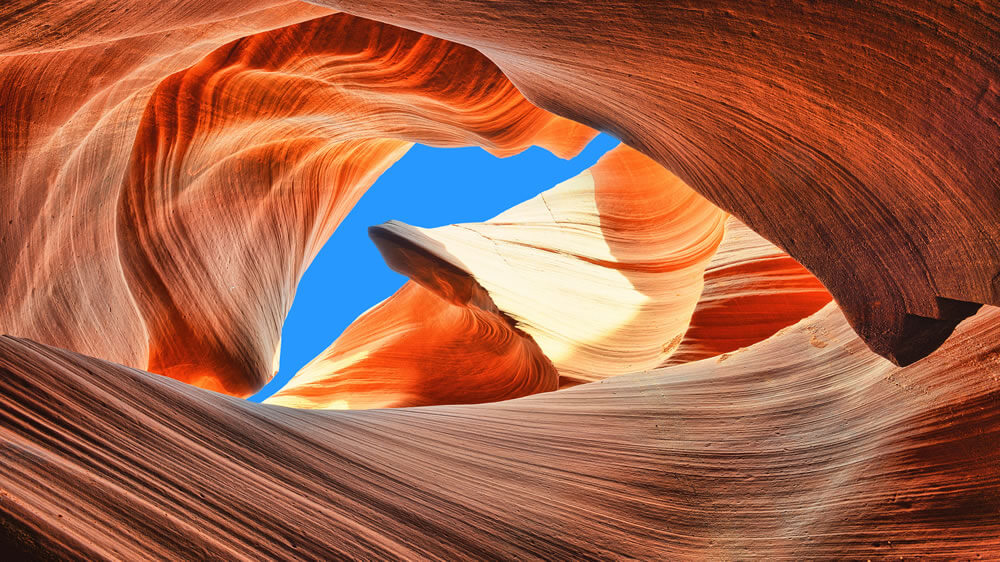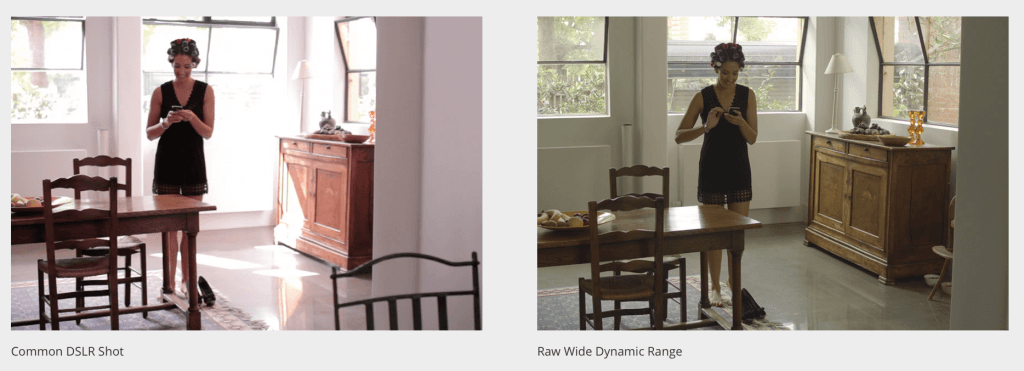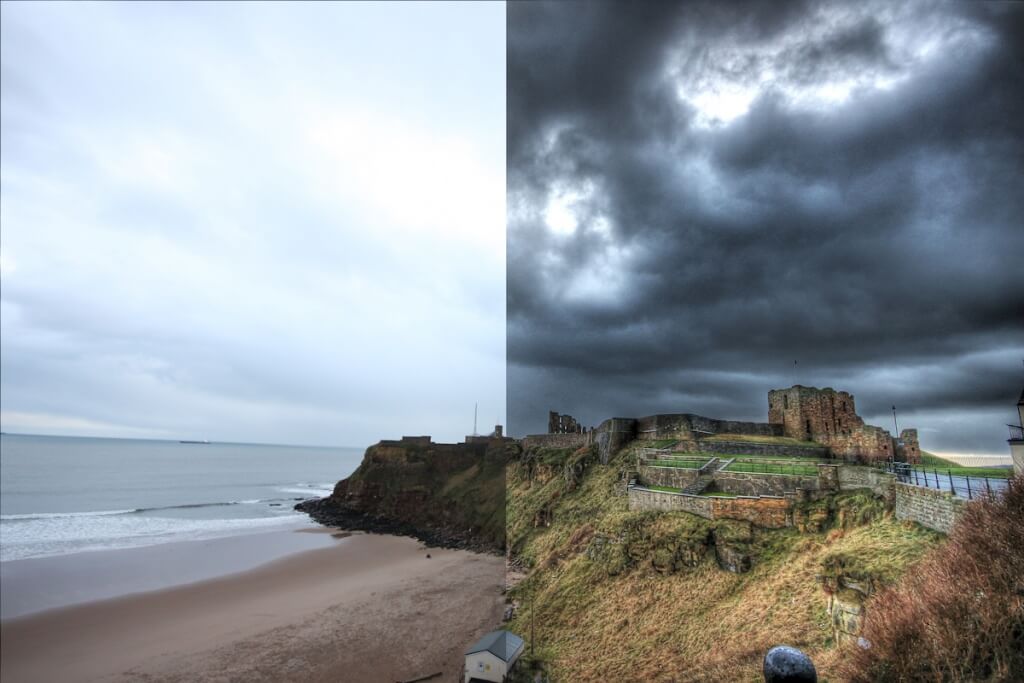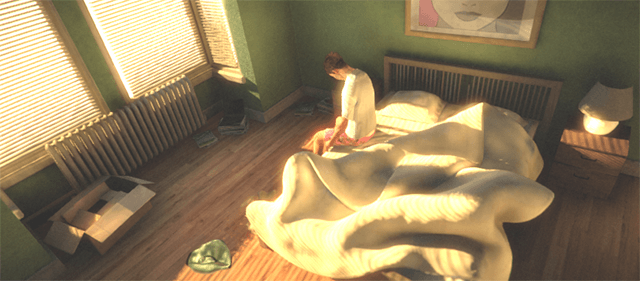The many definitions of Dynamic Range/HDR: Explained!

People tend to think the “resolution” of an image directly relates to its quality. This is not entirely true, as there are many other factors besides resolution to consider. “Dynamic Range” is an important one. It’s is a term I’ve seen thrown around a lot lately. HDR (High Dynamic Range) seems to be one of the new marketing buzzwords for TV manufacturers, and Netflix has announced a push for more “HDR” content. But the problem is: depending on the context, “dynamic range” or “HDR” can refer to a number of related (but not quite the same) concepts. So, I’m going to clear up exactly what they all mean, one by one. Let’s go!
Dynamic Range For Cameras
In imaging, dynamic range refers to the amount of difference between the lightest light, and the darkest dark in an image. This is also referred to as the “latitude” of an image. Dynamic range is typically measured in stops, where each full stop doubles the amount of dynamic range. Our eyes are excellent at interpreting the light and dark areas of an image simultaneously. Cameras… not so much.
Primitive video cameras do not capture images in a very high dynamic range, measuring in at as little as 7 stops of dynamic range. As a result, images with greatly varying light and dark areas will either have their lighter areas overexposed, or the darker areas underexposed.

From Blackmagic Designs site: a comparison of a common DSLR shot, and a raw wide dynamic range shot.
This has improved however in recent years. Cameras with sensors like the RED Mysterium-X and the RED Dragon, as well as the sensors used in cameras produced by Blackmagic Design and Arri offer dynamic range for video that approaches or exceeds the dynamic range of traditional film. RED has even gone as far to include an “HDRx Mode” on their newest cameras, like the RED Epic that really pushes the camera’s latitude. Cameras produced by these manufacturers can push 13-15 stops of dynamic range depending on the sensor, which exceeds the roughly 13 stops provided by good old fashioned film which was used pretty much exclusively in cinema until the 2000’s. Having more dynamic range in your captured image is all about choice. It’s not a particular look, per se. You can take the below HDR image on the right, and choose to only use some of the range afterwards. But if you don’t capture that data at all, it won’t be there to mess around with after. This is why dynamic range is an important selling feature of a camera.
Dynamic Range For Video Encoding
But having all of that beautiful latitude is totally useless if it is lost in the mathematical magic that is video encoding. When you take a video on a video camera, the data captured by the sensor is not being passively copied to your storage device. That data first has to be transcoded and processed from the raw data captured from the sensor, into a usable video file.
Video files are great because we can store lots of video in a small space with them. They are greatly smaller than the raw camera files. But this comes at a cost. Many of the codecs used by consumer video cameras a highly compressed. This means there will always be a compromise in image quality. A lower bit rate usually coincides with a lossy, blockier looking image. But there is another catch. Bit depth.
DLSRs that take video will typically encode their video in a format like 8 bit h.264. To put it as simply as possible, 8 bit video allows for 256 steps of colour for each channel (Red, green, and blue.) This is extremely limiting in the amount of detail you can put into an image, and it’s something that increasing the resolution of an image (read: Ultra HD) does not help despite what the TV manufacturers would have you believe. We have enough pixels now, guys. What we need now is better pixels.
This is a shame, because many raw video formats allow for 12bit color, or 4096 variations of colour per channel. The difference is obvious, especially in the dark scenes of a film, where the dark greys tend to “band” and cause gross looking artifacts. This is due to a lack of wide colour selection. Many cinema cameras, like those manufactured by Arri, Blackmagic Design, or RED now have an in-between option in Apple ProRes of Avid DNxHD video encoding, which allows for 10 bit color. It’s not like that really matters, anyway. Unless you’re going to see it in a cinema (hooray for 10 bit per channel Digital Cinema Projection! <3), all other delivery methods for video (HDTV, YouTube, Netflix, BluRay) only offer 8bit colour. That is, until the advent of HDR television.
HDR Televisions
A TV that is marketed as “HDR ready” is going to have a number of different improvements to your viewing experience. First off, you may find that the television has an improved contrast ratio. That is, the difference between the brightest whites, and darkest blacks. Sound familiar? New OLED TVs can even locally dim the backlight to improve this ratio further. This will totally help the perceived dynamic range, but it doesn’t help the whole 256 colours per channel thing. Thats where a new 10 bit video standard comes in. HDMI 2.0 allows for enough bandwidth not just for 8 bit Ultra HD video, but for 10 bit video. These newfangled UltraHD Blu-ray Discs and their players will support 10bit video, and the releases of these films are going to be marketed as “HDR” versions.
HDR Photography
The term HDR in photography has been around for a while. It typically refers to the process of taking multiple pictures at different exposures (one for the brighter exposed areas, one for the mids, one for the darker exposed areas) and combine them after. This is in order to produce an image with a massive amount of latitude, impossible to achieve with a normal single exposure on today’s camera sensors.

An example of HDR photography, before and after.
Dynamic Range and Colour Grading
So, you captured your image on a camera with a wide dynamic range that records in 12 bit raw. But you’re not done yet. Like I mentioned before, dynamic range is all about choice. With 8 bit DSLR video, like what you would shoot on a Canon or Nikon DSLR, what you see is what you get. You are for the most part locked into the look the camera encodes for you. But if you shoot 12 bit raw, you have access to all of the data the sensor captured, and on a good sensor, that means you’re going to have a lot of data to choose from. You can expose to the darker areas. You can expose to the lighter areas. Sometimes, depending on how the scene is like, you can even do both. But beauty here is, you have more options to decide how you want your image to look.
Here is a frame from a video I took in 12bit raw, graded to expose the interior.

Here is the same image, graded to expose the nighttime exterior.

Here is the same image again, graded “flat” to include as much data as possible.

And finally, a version of the image graded in a way that I find appealing.

My point here is, none of these images are graded “correctly.” They are all useable results of the same image as a result of 12 bit colour. Just because you shot it with a high dynamic range, doesn’t mean you have to use all of the range. But you can decide what appeals to you after the fact.
Dynamic Range For Video Games
The rules of how cameras work don’t really apply in a video game engine, but for realism, we like to emulate them anyway. In video games, an “HDR effect,” somewhat ironically, artificially limits the dynamic range of the visible image on the screen at a given time. It’s noticeable in situations like, say, if you’re in a dark cave, and it’s bright outside. The outside will be over exposed and blown out. This gives us the impression of better realism, because that is how video cameras and our eyes (to a lesser extent) behave in real life. It works by extending the range of brightness in the game engine past 1, meaning there are levels of brightness outside the visible range of the in game camera. These levels can then be “tone mapped” back into the visible range, or left as is, creating a bloomy effect.

An example of an HDR effect in the Unity game engine. Note the blown out areas on the window and blanket.
In Conclusion
There are many, slightly different contextual differences between the different uses of the phrase “High Dynamic Range.” When Netflix says HDR, they’re talking about adding more colour variation to their content delivery. When a camera manufacturer says “dynamic range,” they’re talking about how great of a latitude their camera sensor can capture. HDR photography refers to taking multiple images are different exposure and combining them together after. When a TV manufacturer says HDR, they’re just hyping up their screens contrast ratio and selection of colours. When a video game developer says HDR, they’re just being silly.
